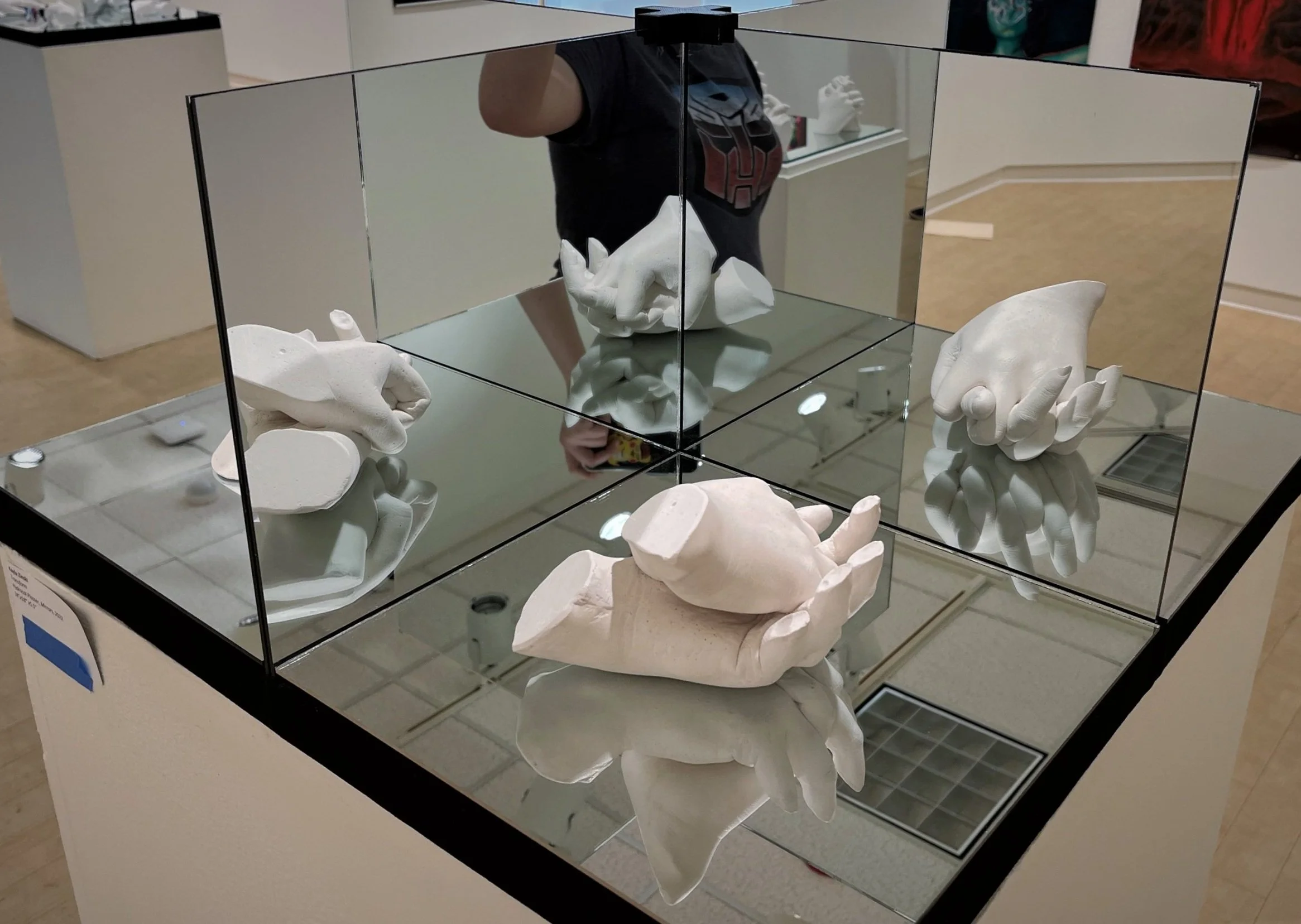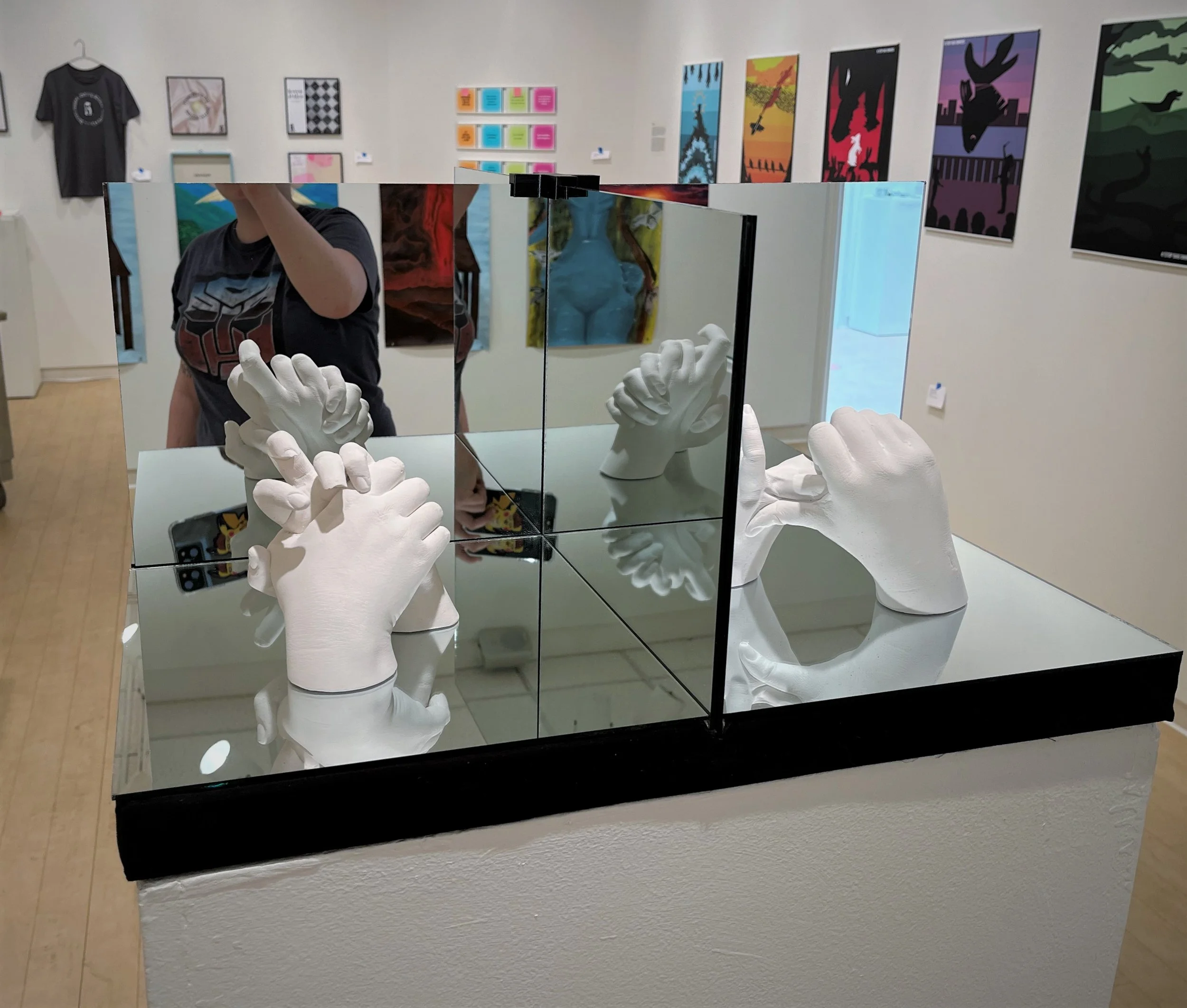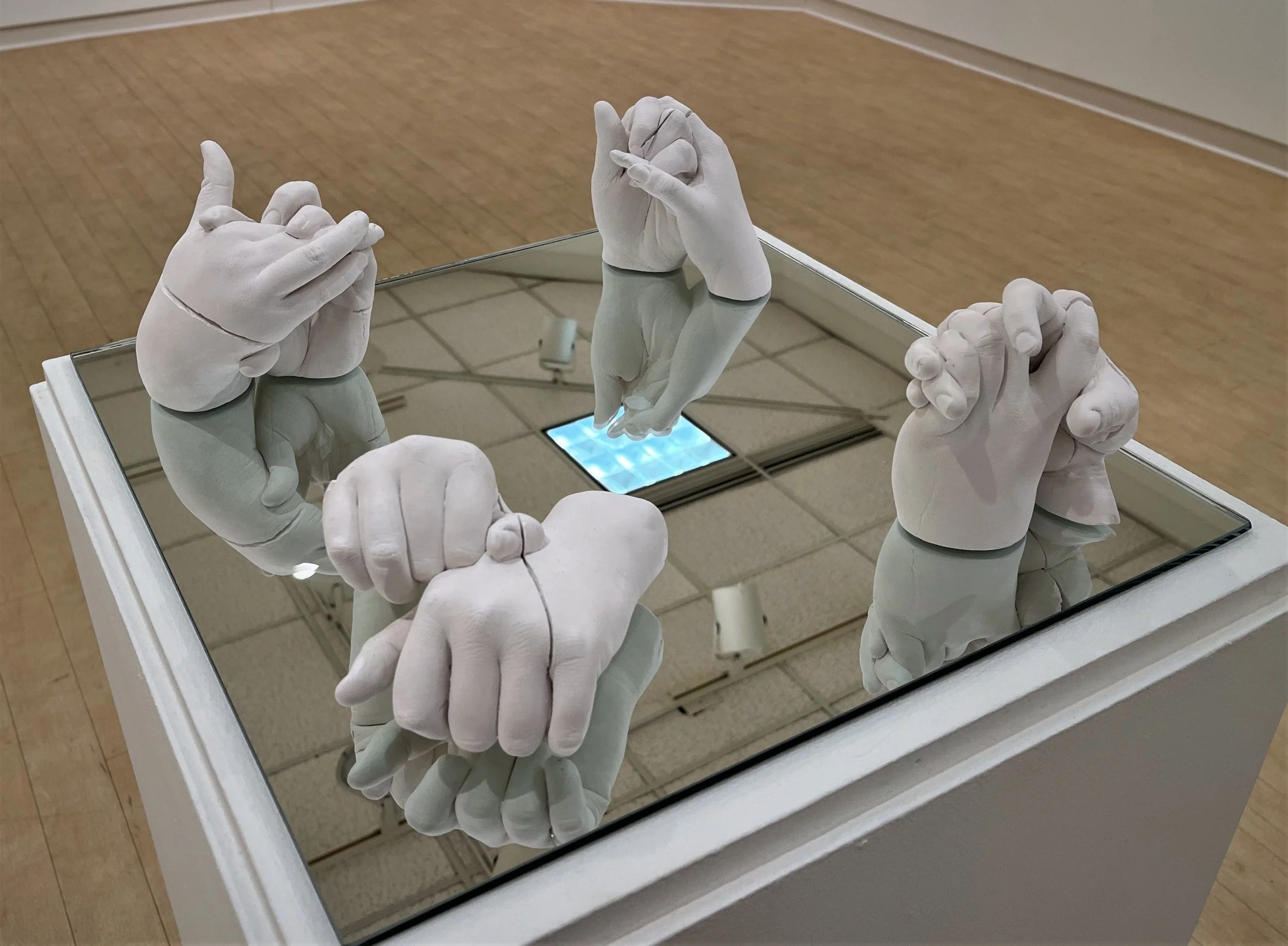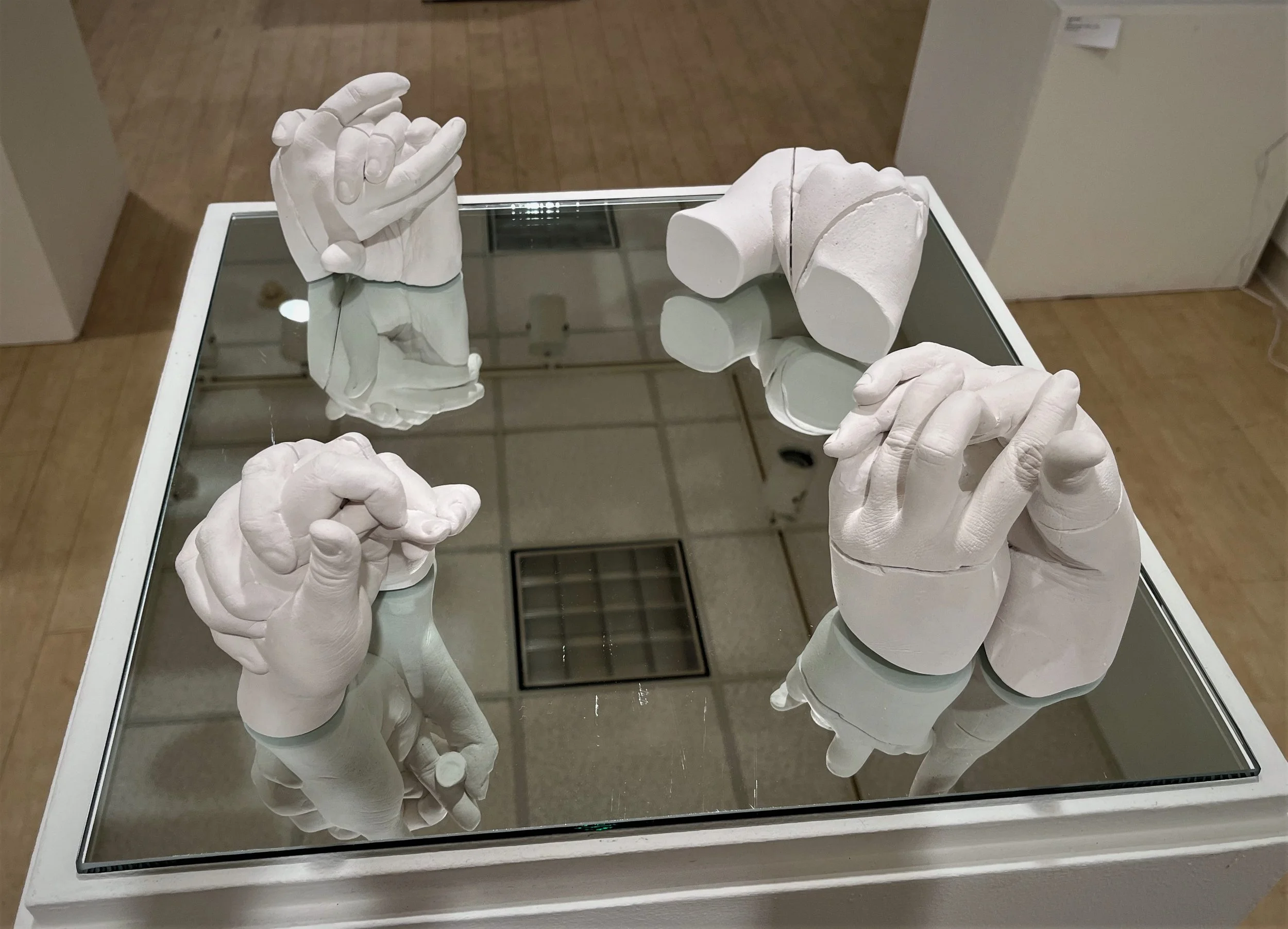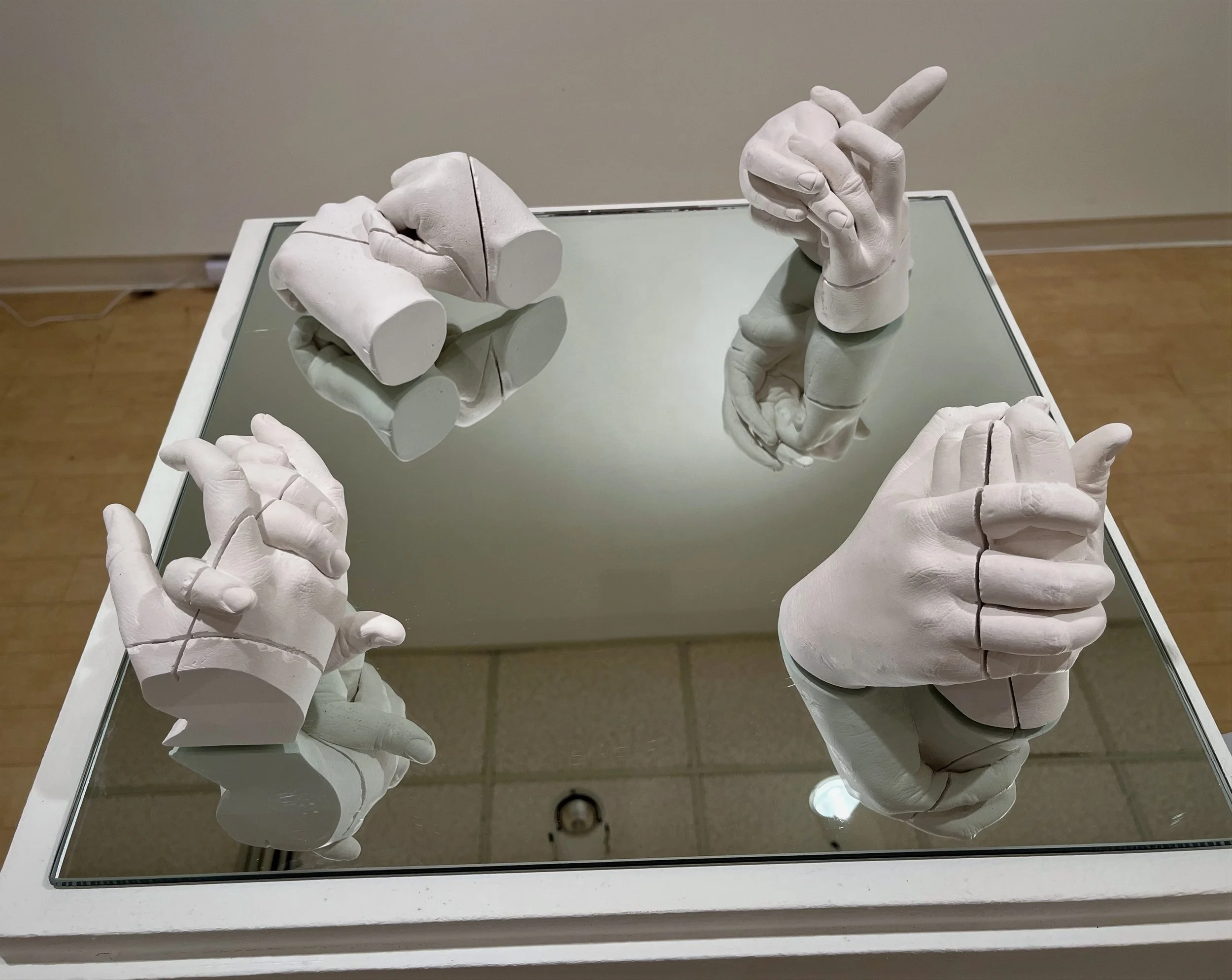Frozen & Mirrored
2022 Studio Art Senior Capstone
University of Lynchburg, Daura Museum of Art
About
Pinching, pulling, squeezing, and stretching. Hands have always been a fascination for me. As our way of interacting with the world, our hands have the ability to turn emotional turmoil into physical change. In a burst of emotion we might leave our surroundings marked, dented, or shattered, and pain can be inflicted without thought.
Drawn from my experiences with depression and anxiety, in this series I explore when destruction turns inward and self-harming. All the hands you see are my own and all have been molded while inflicting, enduring, or reciprocating pain. Though these moments of suffering have long passed, their pain still continues on. Slicing, cutting, or shattering will not relieve the frozen skin, muscles, and bones of their tension. And, their echoes of old pain can still transform and change as if alive and active.
Transform
Mixed Media, 2022, 24.5”x24.5”x12.5”
Cut
Mixed Media, 2022, 18”x18”x5”
Shatter
Mixed Media, 2022, 24.5”x24.5”x12.5”
Slice
Mixed Media, 2022, 18”x18”x5.5”
Echo
Mixed media, 2022, 13”x13”x12.5”
Frozen & Mirrored, In Motion
Some Thoughts and Thanks
Cast with skin-safe alginate and plaster, these are indeed exact replicas of my hands, and they did indeed hurt to make. For all my molds, poses had to be held as tightly and as still as possible for several minutes while the mold set. About 2-3 minutes. Understandably, after removing my hands I was temporarily left with creases, welts, red skin, pain in my joints, and sometimes numb fingers.
The most interesting experience I had was while making the hands used in Shatter. Due to my own fault, these hands may not look like they’re in much pain, but I assure you, making them was one of the more painful experiences of this project. I used a different molding technique that took 20ish minutes to set, which meant 20ish minutes of flexing my hand, leading to some very painful cramping. It also tore out all the hair on my hand and wrist when it was removed. Cheekily, this hair was transplanted onto the first plaster copy I made with the mold. (Exciting and horrifying!)
I want to say thank you to all the people who made this series possible. Chelsea Tinklenberg, my capstone advisor who gave excellent guidance and was forever patient with me and my mess. Marcy Brooke, Allen TenBusschen, and Ursula Bryant for their insight and advice. Alex Bottoms, my wonderful husband who put his engineering degree to good use helping me design and create my mirror displays. And many thanks to all my classmates with whom I suffered alongside and found tremendous support.
Influences
-

Alicja Kwade
"Alicja Kwade is a contemporary Berlin-based Polish artist known for her enigmatic sculptures and installations that explore concepts of space, time, science, and philosophy. She creates immersive experiences about discovery, begging viewers to question their perception of reality."
Kwade was by far my main influence especially her unique use of mirrors. With them, still sculpture is turned into living and breathing things, it gives them a sense of agency and weight. Before finding her work, I didn’t know how to present my pieces in a meaningful way, everything I tried felt stagnant or gimmicky. But then Kwade’s work was recommended to me and I was delighted, her use of mirrors captured the motion and energy that was missing from my pieces. Pain isn’t a stagnant thing, it changes and moves with us, it can deceive or multiply even after it’s been inflicted. My series owes a lot to her and her work.
-
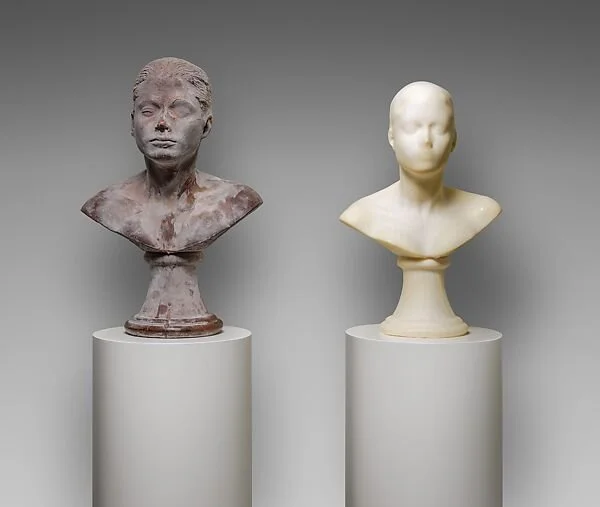
Janine Antoni
"Antoni is known for her unusual processes, using her body as both a tool and a source of meaning within the conceptual framework of her practice. Antoni’s early methods involved transforming unique materials such as chocolate and soap through habitual, everyday processes like bathing, eating and sleeping to create sculptural works and installations. By way of her body of work, Antoni carefully articulates her relationship to the world, giving rise to emotional states that are felt in and through the senses. In each piece, no matter the medium or image, a conveyed physicality is meant to speak directly to the viewer’s body."
Self-destructive art was an interest from the very beginning of my project. I wanted to capture the inward reflection of pain, and I loved the idea of that being quite physically displayed by destroying a representation of myself. Antoni's work really helped me hone what message I was trying to convey with this destruction.
-
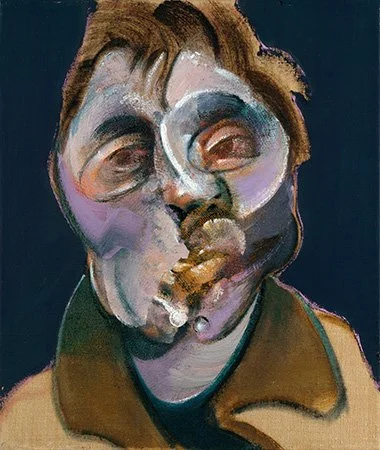
Francis Bacon
"Bacon's treatment of the face could be especially challenging. In his portraits, generally of people the artist knew well, the subjects are sometimes shown screaming. Even in repose the features shift and reshape themselves before our eyes, yet they never become unrecognizable despite the swirling paint. Often called an Expressionist or even a Surrealist, Bacon himself strongly rejected both labels. He insisted that in its own way his work was close to the world we see every day, remaining true to what he called 'the brutality of fact.'"
Bacon's work was some of the first I was really drawn to at the start of my project. I found it fascinating how he used self-portraits as a way to deconstruct himself, and ultimately reveal flaws in glaring bluntness. I loved this harsh message, and as I worked I found myself coming back to these portraits of his. Pain is brutal, and I didn't want to shy away from that.

